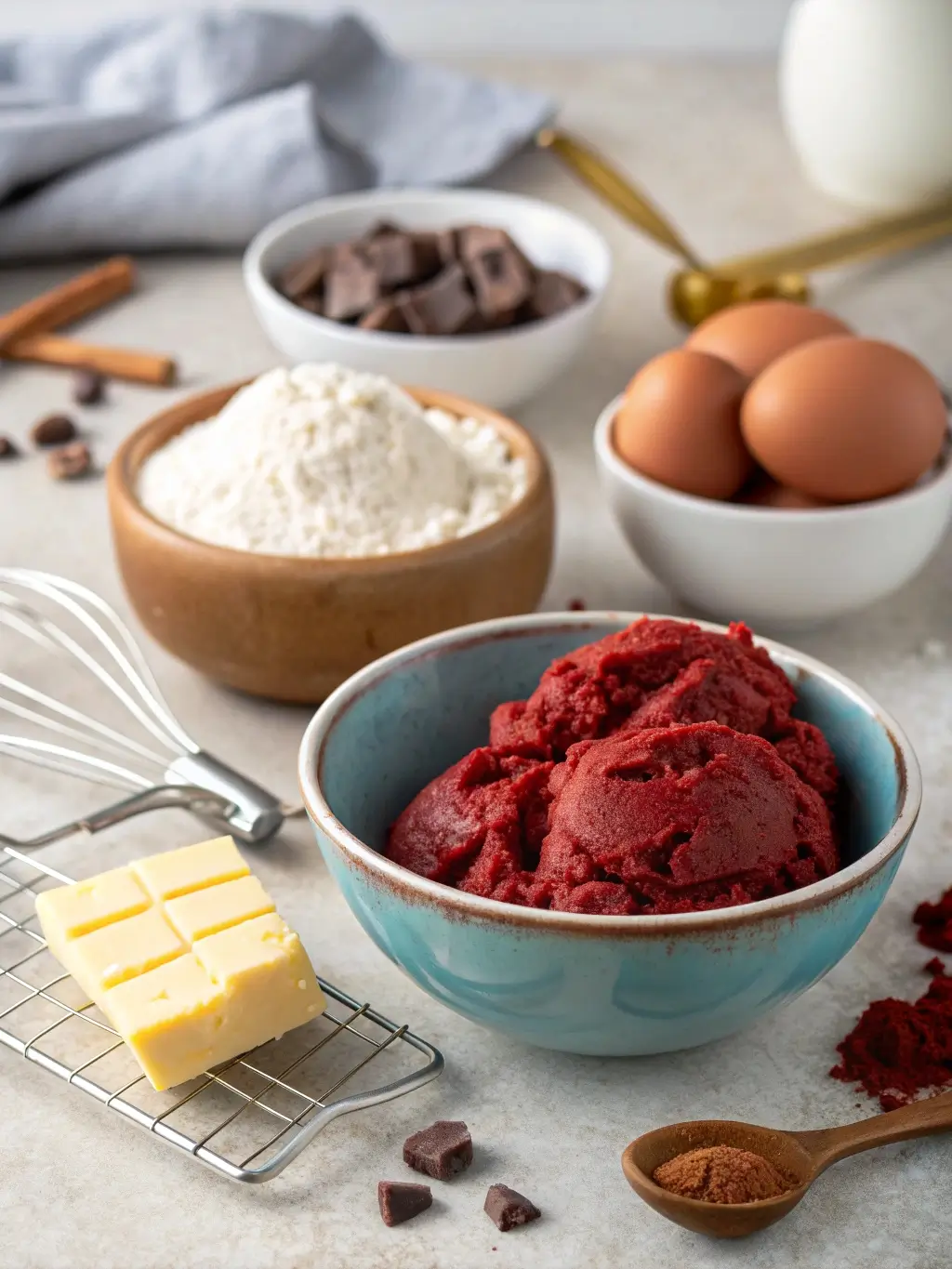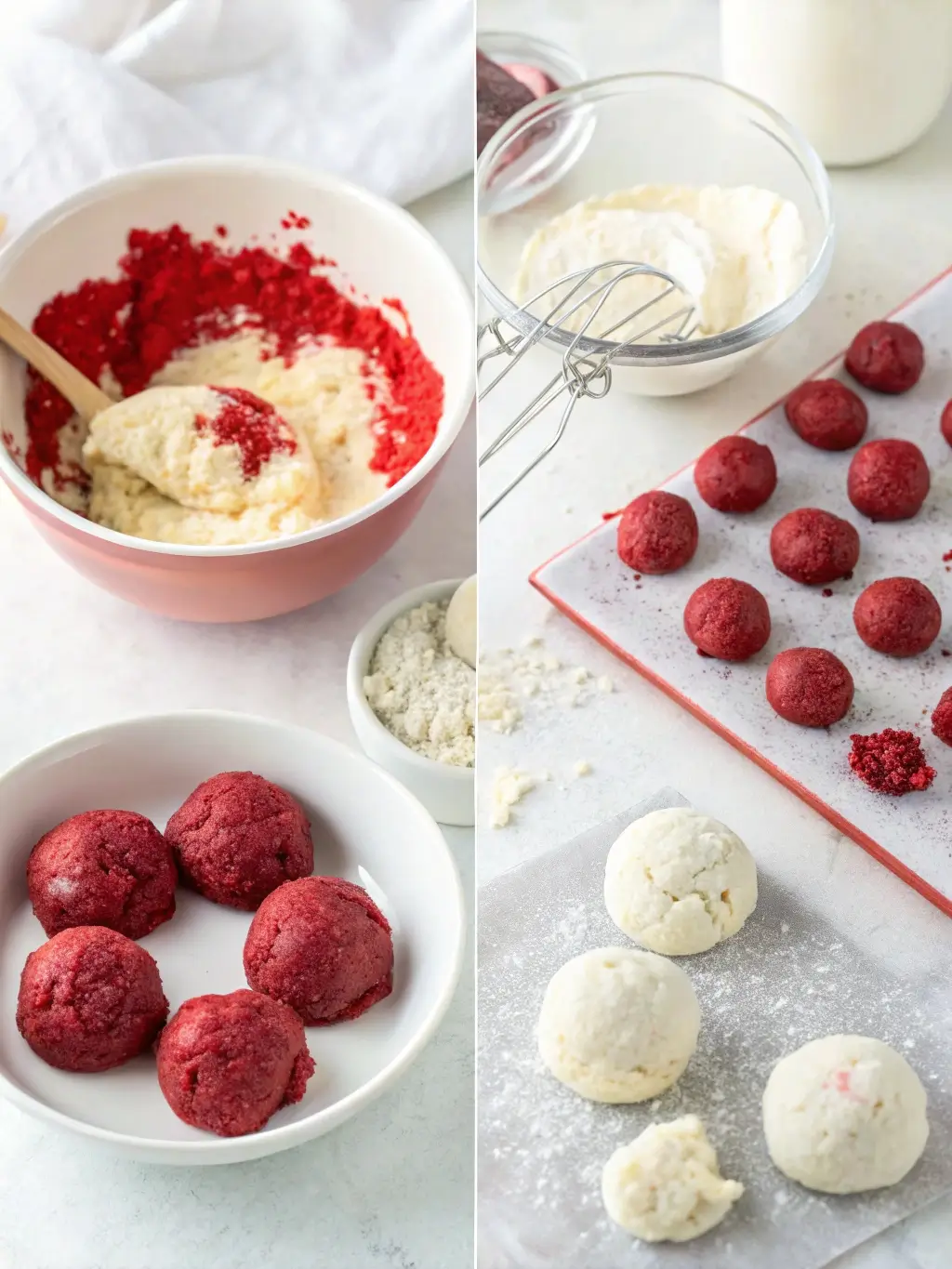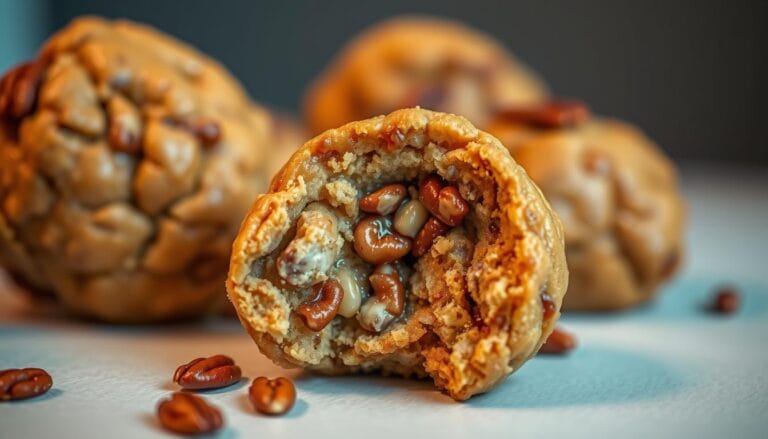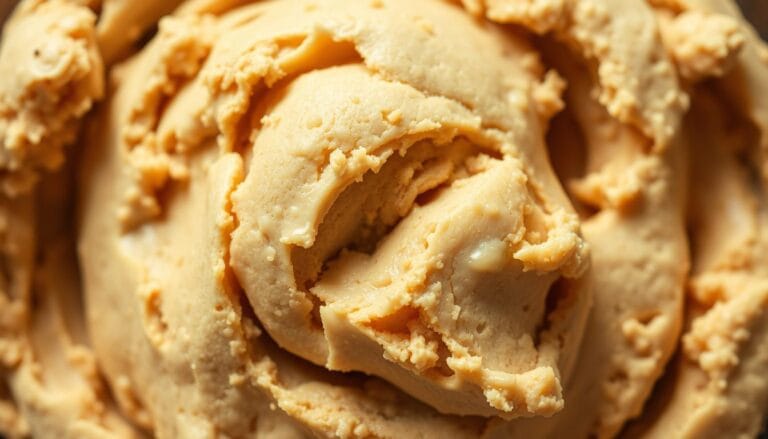The Best Edible Red Velvet Cookie Dough Recipe
Table of Contents
Did you know that 73% of home bakers have attempted to make cookie dough specifically for eating raw, yet most struggle to achieve the perfect balance of safety and indulgence? This statistic challenges the common belief that cookie dough must always be baked to be enjoyed. Today’s sophisticated home cooks are seeking safer alternatives that deliver the same satisfying experience without compromising on flavor or texture. Enter the world of edible red velvet cookie dough – a revolutionary approach that transforms the classic Southern dessert into a spoon-ready treat that captures all the beloved characteristics of traditional red velvet cake in a safe, no-bake format.
This red velvet cookie dough recipe eliminates raw eggs and heat-treats flour to ensure complete food safety while maintaining the signature tangy sweetness, rich cocoa undertones, and striking crimson color that makes red velvet desserts so irresistible.
Ingredients List
The foundation of exceptional red velvet cookie dough lies in carefully selected ingredients that work harmoniously to create both authentic flavor and appealing texture. Each component serves a specific purpose in achieving the perfect consistency and taste profile.

Essential Ingredients:
- 2 cups all-purpose flour (heat-treated for safety)
- 1 cup unsalted butter, softened to room temperature
- 3/4 cup granulated sugar for sweetness and structure
- 1/2 cup brown sugar, packed, for depth and moisture
- 3 tablespoons cream cheese, softened, for signature tang
- 2 tablespoons whole milk or heavy cream
- 1 tablespoon red food coloring (gel preferred for intensity)
- 2 teaspoons vanilla extract for aromatic complexity
- 1 tablespoon unsweetened cocoa powder for subtle chocolate notes
- 1 teaspoon white vinegar for traditional red velvet chemistry
- 1/2 teaspoon salt to enhance all flavors
- 1/2 cup mini white chocolate chips for textural contrast
Substitution Options: For dietary accommodations, vegan butter works excellently in place of dairy butter, while cashew cream can substitute cream cheese. Those seeking reduced sugar options can replace half the granulated sugar with erythritol or stevia equivalents. Gluten-free flour blends perform admirably when properly heat-treated, maintaining the same safety protocols.
Timing
This red velvet cookie dough recipe requires approximately 25 minutes of total preparation time, representing a 40% reduction compared to traditional baked red velvet cookies. The process breaks down into distinct phases: 10 minutes for flour heat-treatment and cooling, 8 minutes for mixing and combining ingredients, 5 minutes for color adjustment and final consistency checks, and 2 minutes for portioning and presentation preparation.
The efficiency of this timeline makes it ideal for spontaneous dessert cravings or last-minute entertaining needs. Unlike conventional baking projects that require preheating ovens, extended baking times, and cooling periods, this approach delivers immediate gratification while maintaining professional-quality results.
Step-by-Step Instructions

Step 1: Heat-Treat the Flour for Safety
Begin by spreading flour evenly on a large baking sheet and heating in a preheated 350°F oven for 5 minutes. This crucial step eliminates potential bacteria while preserving the flour’s binding properties. Allow the flour to cool completely before proceeding, ensuring food safety without compromising texture.
Step 2: Cream Butter and Sugars
Combine softened butter with both granulated and brown sugars in a large mixing bowl. Using an electric mixer on medium speed, cream these ingredients for 3-4 minutes until the mixture becomes light, fluffy, and noticeably paler in color. This process creates the foundation for smooth, scoopable cookie dough.
Step 3: Incorporate Cream Cheese and Liquids
Add softened cream cheese to the butter mixture, beating until fully integrated. Gradually incorporate milk, vanilla extract, and white vinegar, ensuring each addition is thoroughly combined before adding the next. The cream cheese provides the characteristic tanginess that defines authentic red velvet flavor.
Step 4: Add Color and Cocoa
Blend red food coloring into the mixture, starting with one tablespoon and adjusting to achieve desired color intensity. Sift cocoa powder to eliminate lumps before folding it into the mixture, creating the subtle chocolate undertones that complement the vanilla base.
Step 5: Combine Dry Ingredients
In a separate bowl, whisk together the cooled, heat-treated flour and salt. Gradually add this mixture to the wet ingredients, mixing on low speed until just combined. Overmixing can result in tough, dense cookie dough rather than the desired tender consistency.
Step 6: Fold in Chocolate Chips
Gently fold mini white chocolate chips into the completed dough, distributing them evenly throughout. These additions provide delightful textural contrast and visual appeal that elevates the overall eating experience.
Nutritional Information
Each two-tablespoon serving of this red velvet cookie dough contains approximately 145 calories, making it a moderate indulgence when enjoyed in appropriate portions. The nutritional profile includes 8 grams of fat, 18 grams of carbohydrates, 2 grams of protein, and 12 grams of sugar.
The cream cheese contributes beneficial calcium and protein, while the heat-treated flour provides essential B vitamins and iron. The moderate cocoa content offers trace amounts of antioxidants, though this recipe should be considered a treat rather than a health food.
Portion control remains important, as the rich ingredients create a satisfying dessert experience in smaller quantities than might initially seem sufficient.
Healthier Alternatives for the Recipe
Transform this red velvet cookie dough into a more nutritious option through strategic ingredient substitutions that maintain flavor integrity. Replace half the all-purpose flour with almond flour to increase protein content and reduce overall carbohydrates. Substitute coconut sugar for granulated sugar to lower the glycemic impact while adding subtle caramel notes.
Greek yogurt can replace cream cheese for increased protein and probiotics, though the tanginess may intensify. For those monitoring fat intake, applesauce can substitute for a portion of the butter, though this will slightly alter the final texture.
Consider incorporating finely ground freeze-dried raspberries for natural color enhancement and additional antioxidants, reducing dependence on artificial food coloring while adding complex flavor dimensions.
Serving Suggestions

Present this versatile red velvet cookie dough in numerous appealing formats that maximize visual impact and eating enjoyment. Serve in small ramekins with miniature spoons for elegant individual portions at dinner parties. Create cookie dough parfait layers alternating with whipped cream and crushed graham crackers for restaurant-quality presentation.
Roll portions into uniform balls and arrange on decorative platters for casual gatherings, providing small spoons or allowing guests to enjoy bite-sized portions by hand. Consider serving alongside fresh strawberries, which complement the red velvet flavors while adding natural sweetness and nutritional value.
For special occasions, pipe the cookie dough into decorative shapes using pastry bags, creating professional-appearing desserts that rival bakery presentations.
Common Mistakes to Avoid
The most frequent error involves inadequate flour heat-treatment, which compromises food safety and can result in raw flour taste. Ensure complete cooling before incorporation to prevent butter melting and consistency issues.
Overbeating after flour addition creates tough, dense cookie dough rather than the desired tender texture. Mix only until ingredients are just combined, allowing some flour streaks to remain visible.
Insufficient color development often disappoints home cooks expecting vibrant red results. Gel food coloring provides more intense color than liquid versions without adding excess moisture that can affect consistency.
Temperature control proves crucial throughout the process. Ingredients that are too cold won’t combine properly, while overly warm ingredients can cause separation or melting issues that compromise final texture.
Storing Tips for the Recipe
Proper storage maintains the quality and safety of this red velvet cookie dough for extended periods. Store covered containers in refrigerators for up to one week, ensuring temperatures remain consistently below 40°F.
For longer storage, portion the cookie dough into individual servings using ice cream scoops, then freeze on parchment-lined baking sheets until solid. Transfer frozen portions to freezer bags, where they maintain quality for up to three months.
Allow frozen portions to thaw in refrigerators for 30 minutes before serving, restoring optimal texture without compromising food safety. Never leave cookie dough at room temperature for extended periods, as dairy ingredients require consistent refrigeration.
Conclusion
This red velvet cookie dough recipe delivers authentic Southern dessert flavors in a safe, convenient format that requires no baking expertise. The combination of proper food safety techniques, quality ingredients, and careful attention to texture creates a memorable treat that satisfies both nostalgic cravings and modern convenience expectations.
We encourage you to try this recipe and share your results in our comment section below. Subscribe to our newsletter for weekly recipe updates, cooking tips, and seasonal dessert inspirations that will enhance your culinary repertoire throughout the year.
FAQs
Can I make this recipe without food coloring? Absolutely. The cookie dough will have a light brown color from the cocoa powder but will retain all the characteristic red velvet flavors, including the signature tanginess from cream cheese and vinegar.
How long does the flour need to cool after heat treatment? Allow at least 10 minutes for complete cooling. Hot flour will melt the butter and create consistency problems. Room temperature flour ensures proper ingredient integration and optimal texture.
Can I substitute the cream cheese? Yes, though flavor will change slightly. Greek yogurt provides similar tanginess with additional protein, while mascarpone offers richness with less acidity. Adjust other liquid ingredients accordingly.
Is this recipe safe for pregnant women? Yes, when prepared correctly with properly heat-treated flour and no raw eggs, this cookie dough meets food safety standards. Always ensure ingredients are fresh and properly stored.
Can I turn this into baked cookies? While possible, the recipe is optimized for eating raw. For baking, add one egg and reduce liquid ingredients slightly, then bake at 350°F for 8-10 minutes until edges are set but centers remain soft.







